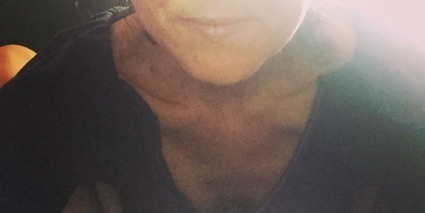The Wisdom of the Body
 A BOOK REVIEW
A BOOK REVIEWAs books do, this one���Christine Valters Paintner ���s newest, The Wisdom of the Body���came to me at just the right time. I am pretty in touch with my body, but this book has me longing to dance and move for no reason at all other than the pure joy of it. To dance like no one is watching���seriously!
Although I love Christine���s website���The Abbey of the Arts���and have enjoyed several of her earlier books, to be honest, I wasn���t sure this book would provoke any ���ahas��� in me because I���ve read and written so much on the subject. But a few paragraphs in, my doubts were put to rest. This book is the real deal.
I have to tell you up front that I���m writing this while still at the beginning of the book rather than after finishing it. Why? Well, for one, I want to savor this one���try out the contemplative practices and really live into the book���rather than just breezing through so I can write a proper review. And two, I found so much I wanted to share with you in the introduction and first chapter that I decided to break the rules and perhaps read it alongside some of you.
I was blessed enough to receive a review copy of this book just before my new book on Lilith was released. I didn���t see any connection between the two at the time, but as soon as I started reading, it became very clear. In her book, Christine calls us to reclaim the sacred connection between us and our bodies that���s been severed. Part of this severing comes from the treatment of our uniquely female embodiment of the sacred with religion.
And part of that severing, I believe, comes from how Christianity has told the story of women���from the very beginning. There is a misplaced sense of shame that gets transferred to us through the story of Eve, who is presented, paradoxically, as having no authority yet as entirely to blame for the very fall of humanity. By reclaiming the lost story of Lilith���the legendary predecessor of Eve who refused to submit to Adam and subsequently left the Garden���we are in a sense reclaiming our right to use our voice and our body as we are divinely called to do.
Christine does not dwell on this problem, for her book is very much about ���what we can do,��� rather than ���what was done to us.��� She does touch on the magnitude and source of the problem in the introduction acknowledging that in the Christian tradition we get ���mixed messages about our bodies at best and outright disdain for our physical selves at worst.��� She goes on to say, ���Even if we don���t locate ourselves in the Christian tradition, the legacy is there in the culture, voices of shame, and rampant marketing designed to feed our insecurities and sense of satisfaction.���
The other reason this book resonated with me now is that I am finishing up a week-long detoxification program���Panchakarma at the Houston Ayurvedic Center���that has had me connecting to my body in new and profound ways. Christine���s book confirms what I am learning���that the body is wise���and is giving me practices (some new and some that I needed to be reminded of!) I can incorporate into my life to help maintain this new-found connection and the mind-body balance I���m cultivating this week.
The crux of this book���s message is found in a question she poses very early on, ���What if your fundamental commitment as you begin this journey is to only offer your body and soul that which is nourishing, to listen to what depletes you and say no to those things?��� She encourages us to ask of every single thing in our life���what we eat, do, say and support; where we go; and who we spend time with������Does this nourish me or does this deplete me?���
When we are out of touch with our bodies, we don���t even know how to answer that question. To help, Christine provides snippets of poetry by well-known sources alongside those penned by her students. She assigns us a guide from within Christian tradition for each chapter���Allies on the Journey, Christine calls them. These women (Sophia is one!) give us new feminine imagery and provide a touchstone for our own spiritual formation.
But, most of all, you will find new ways of thinking tethered to practice. You will be given concepts but also gifted with actions within which to ground them. The embodied practices include everything from mandala making to yoga poses and are interspersed with easy-to-understand meditative activities like creating a breath prayer and writing a prayer of lament.
I am looking forward to journeying through this book and hope some of you are called to join me. Chime in below if you plan to read along. Perhaps I���ll do a follow-up post when we���re done! You can read more about Christine at Abbey of the Arts, her virtual online monastery, where she supports transformative living through contemplative and expressive arts.
Want to share? Click away!
Published on April 01, 2017 09:04
No comments have been added yet.



